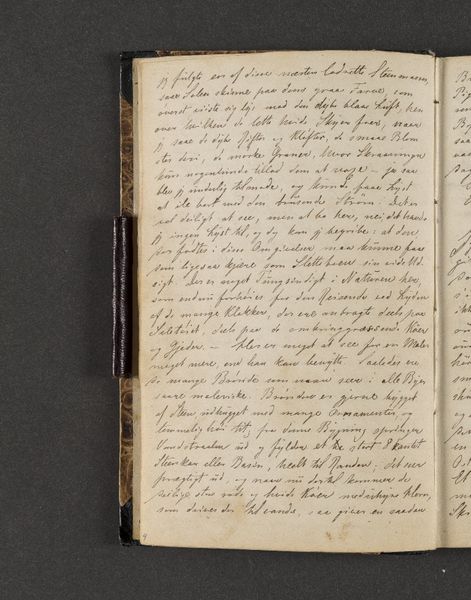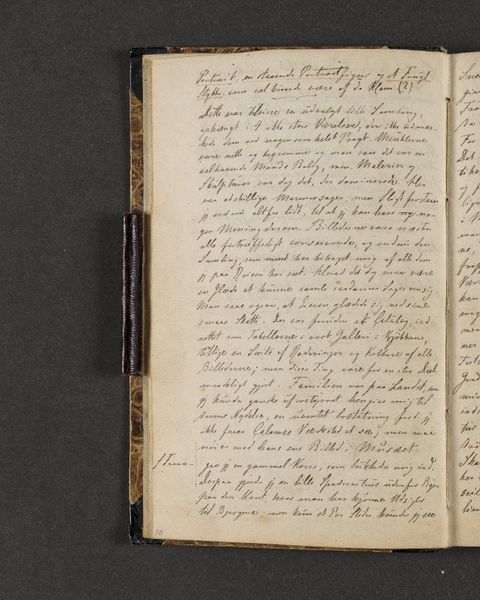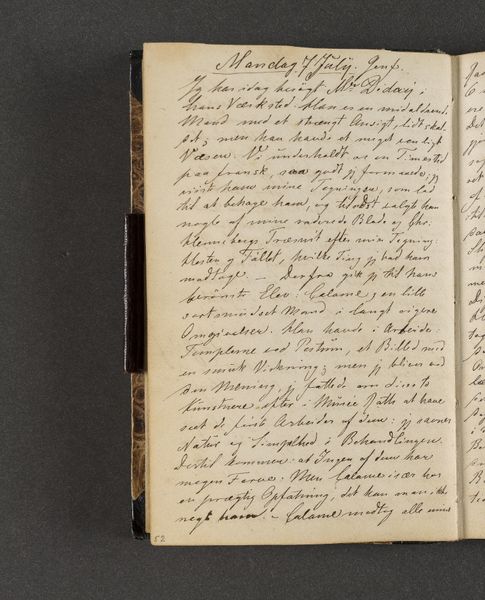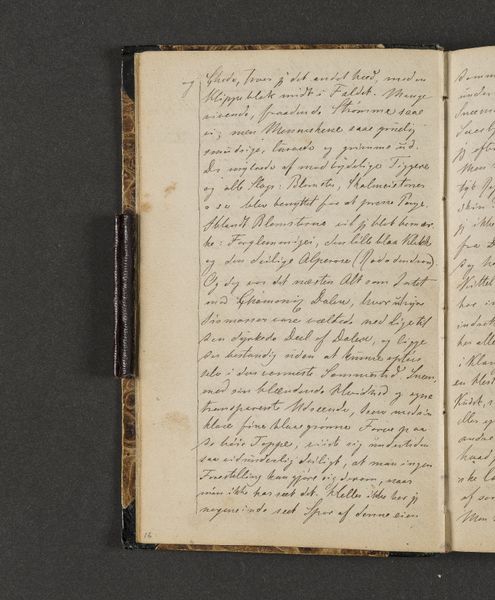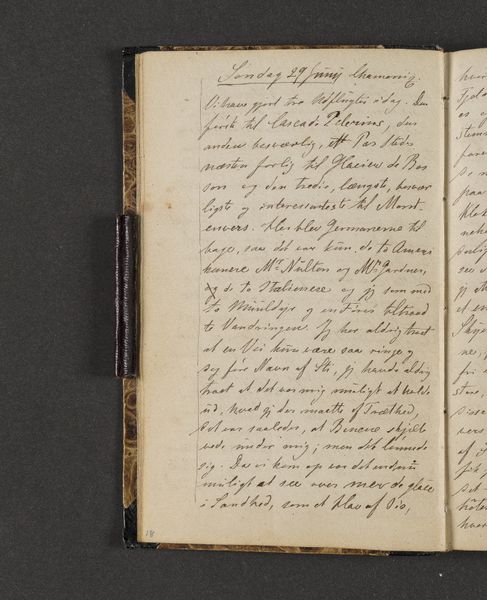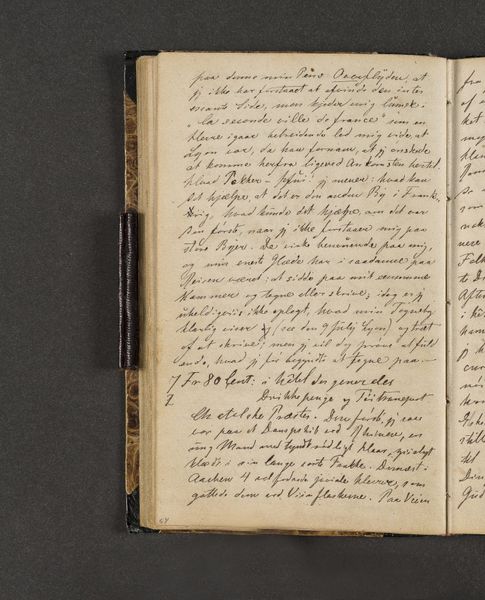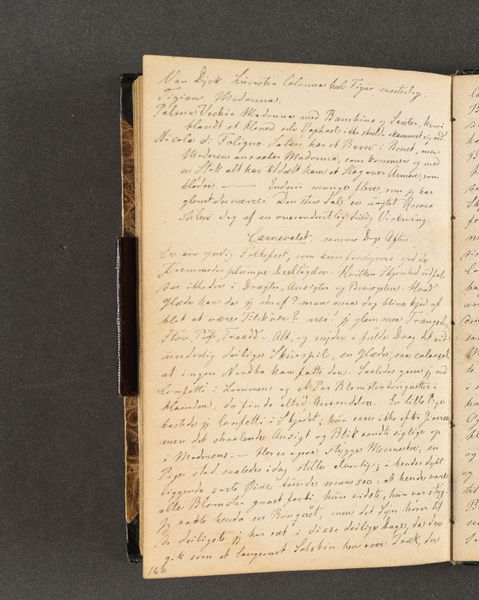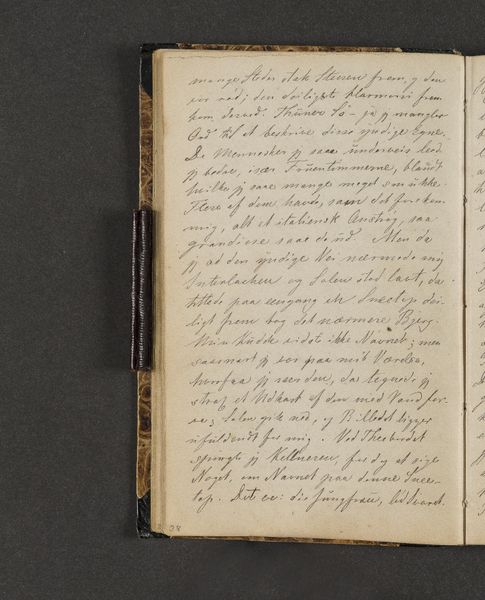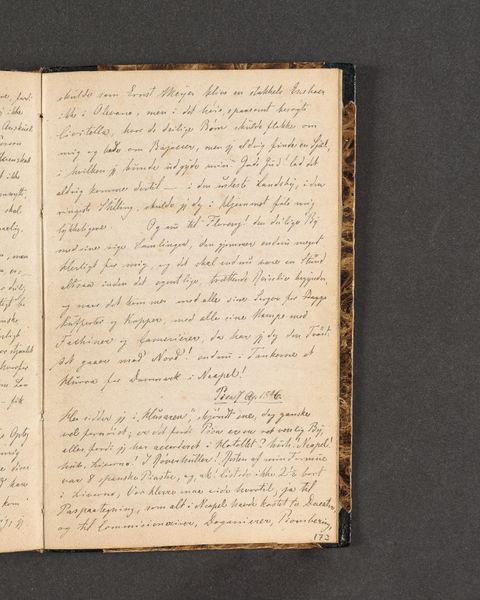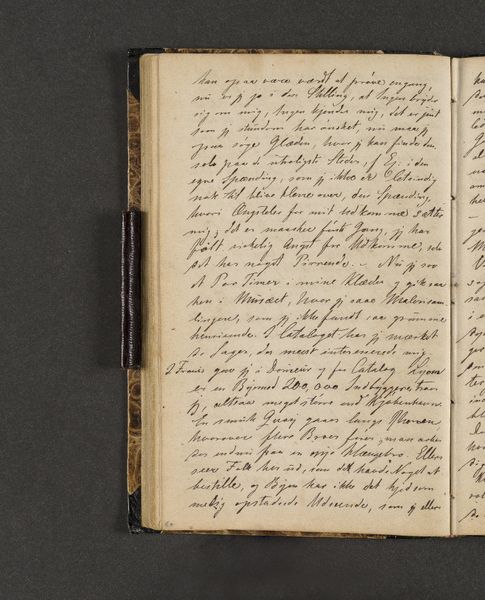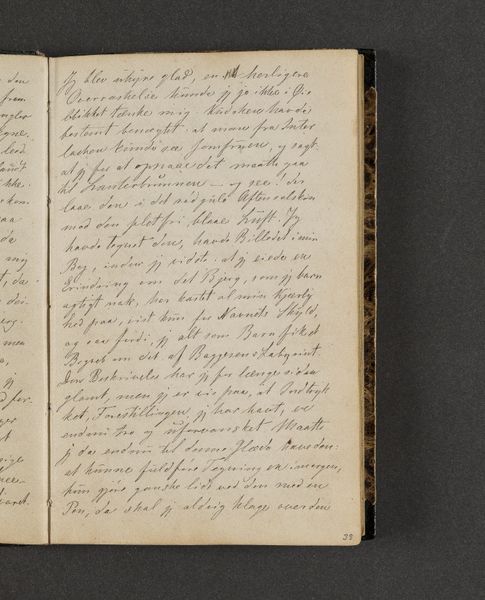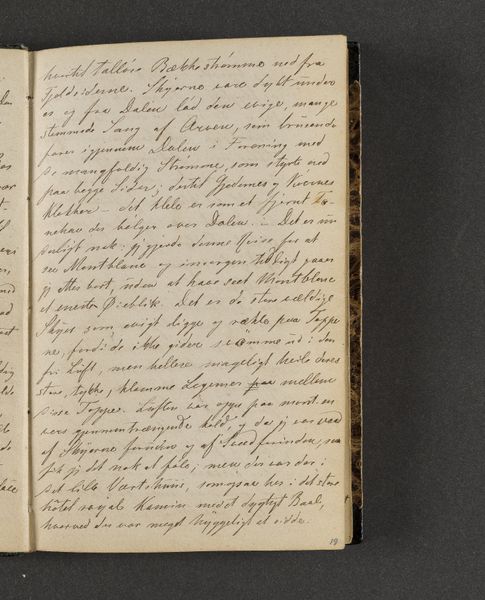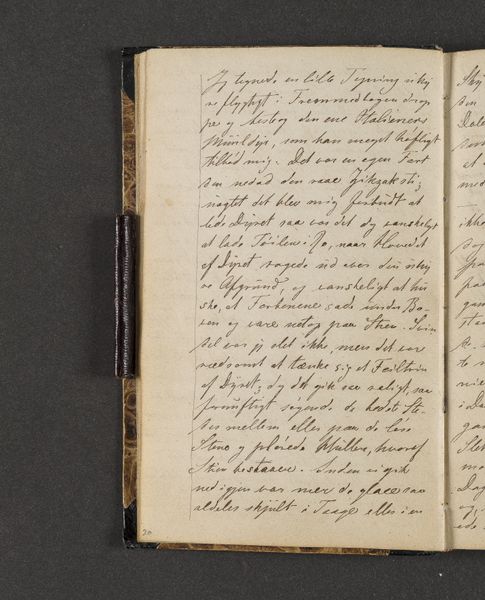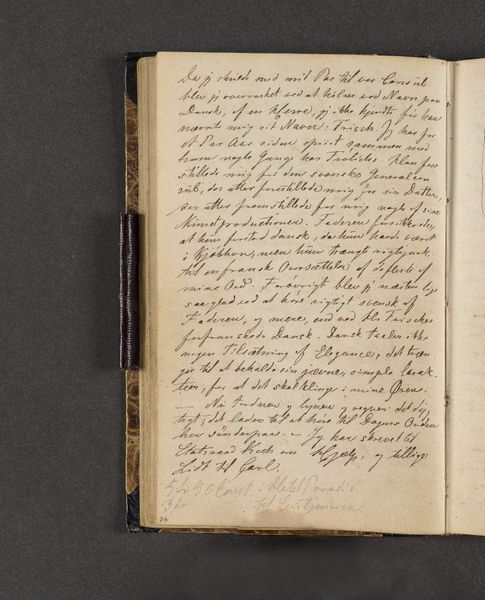
drawing, paper, pen
#
drawing
#
paper
#
romanticism
#
pen
Dimensions: 161 mm (height) x 103 mm (width) x 11 mm (depth) (monteringsmaal)
Curator: Here we see "Rejsedagbog," or "Travel Journal," created in 1845 by Johan Thomas Lundbye. The work resides in the collection of the SMK, the National Gallery of Denmark. It's a pen drawing on paper. What’s your initial reaction? Editor: My eyes struggle to make sense of the scribbles on the page, but despite the lack of legibility, the marks somehow convey the mood and intensity of its creation. It feels intimate, like catching a private moment. Curator: That's an insightful observation. Consider this: Lundbye, associated with the Danish Golden Age, often portrayed the natural beauty of the Danish landscape. However, here, we see something entirely different. We are seeing raw travel notes—thoughts, observations, the detritus of seeing the world. Editor: Absolutely. It’s as if the act of recording is more important than the record itself. Note how the tight, hurried marks seem to mirror the artist’s immediate perceptions—fleeting moments, captured in a rapid, almost frenetic fashion. There is a lot to suggest its gestural speed in terms of materiality. Curator: And remember the social context of travel at this time. A journey was a significant undertaking. The very existence of a travel journal points to Lundbye's social standing and privilege. He's recording observations shaped by his own cultural perspective. Editor: Precisely! The neatness of the handwriting contrasts starkly with the frenzied strokes; it hints at an attempt to impose order upon experience. Look at the darker, more emphatic lines scattered here and there. See how these contribute to the image as a whole? It is all about line here. Curator: Lundbye uses the journal format as a kind of personal repository, reflecting the heightened individualism characteristic of the Romantic era, of this specific traveler. He can be the interpreter, summarizer, and even artist during and after. Editor: It's tempting to romanticize the artist’s subjective viewpoint, yet consider the work from a formalist point of view. How do the artist’s personal viewpoints and beliefs impact its composition, structure, and reception. It cannot simply be 'feeling.' Curator: It invites a closer inspection into artistic expression that might have been considered more than notes; a form of documentation turned form of fine art. Editor: True. It is so very rare to be given such insight into what drives and what is left in between these major works.
Comments
No comments
Be the first to comment and join the conversation on the ultimate creative platform.
